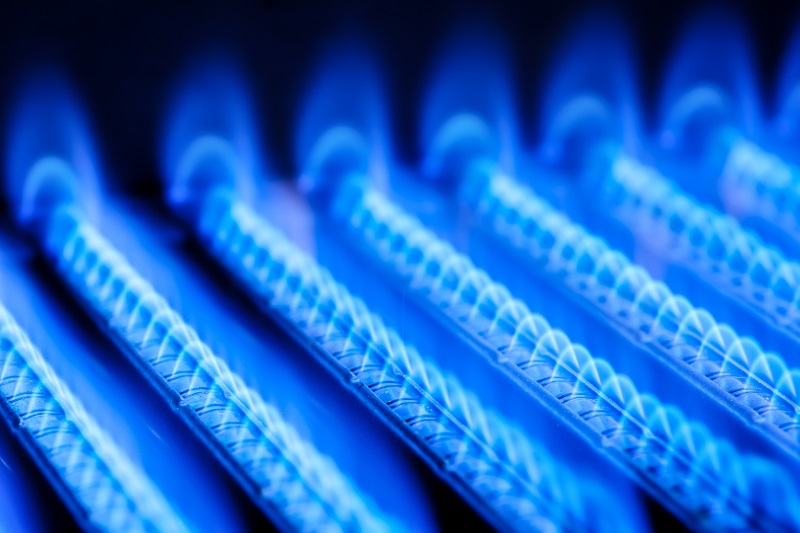
Gas is the number one consumer energy choice for heating homes and businesses. However, the term ‘gas’ is sometimes used without defining if it is natural gas or propane. While both fuels are very similar, they are not identical. There are many differences between the fuel sources, from their source, to physical properties, to costs.
Here we dig a bit deeper into each type of fuel.
Natural gas vs propane
- Natural gas is a fossil energy source that formed deep beneath the earth’s surface from decomposed organic matter, and was buried deeper and deeper over many millions of years. Sealed off in an oxygen-free environment and exposed to increasing amounts of heat and pressure, the organic matter undergoes a thermal breakdown process that converts it into hydrocarbons—a compound of hydrogen and carbon. The lightest of these hydrocarbons are known collectively as natural gas. Natural gas is mostly methane but can also contain different compounds (including propane). By drilling through the layers of salt, silt and rock, the gas is brought up to the surface where it is put into gathering pipelines and sent to natural gas processing plants. The processing of natural gas involves removal of the compounds from the raw gas in order to prevent condensation of these volatiles in natural gas pipelines. In 2009, the U.S. Energy Information Administration (EIA) estimated that the U.S. possesses 2,203 trillion cubic feet of natural gas that could be recovered using current technology.
- Propane is a by-product of natural gas processing and petroleum refining. It is a refined fuel. North American propane is stored in huge salt caverns which can store 80,000,000 barrels or more of propane. When the propane is needed, much of it is shipped by pipelines, railroads, barges, trucks, or tanker ships to other areas of the United States. The supply of propane cannot easily be adjusted to meet increased demand, because of the by-product nature of propane production.
Similarities between propane and natural gas
Natural gas and propane do have many similarities.
- They both produce carbon monoxide from the burning of hydrocarbons.
- They are both low emission fuels, burning relatively cleanly for the environment. Although propane is a popular choice for barbecues in Arizona (because the low boiling point makes it vaporize as soon as it is released from its pressurized container so no vaporizing device is required, and it’s easily transportable in tanks) many BBQ enthusiasts and chefs prefer to cook with natural gas connected to their home supply. This is because of the difference in clean burning.
- They can both be stored in large above-ground tanks or in refillable, portable bottles as a liquid.
- Both gases can be transported easily. Natural gas is often connected via city lines, but can be shipped in tanks much like propane. Propane is easily transportable and already part of the existing nationwide transportation and handling system.
- They are similar in cost. The retail cost of propane in the United States fluctuates year to year, between seasons, and between states. In October 2013 the price per gallon was approximately $2.37, in December 2015 it dropped to $1.97 per gallon, and as of August 2018 it had risen to $2.48 per gallon. The price of natural gas is generally less than that of propane, however, when you compare the efficiency of propane it almost balances out the difference in costs so it’s not really a factor.
Differences between propane and natural gas
Despite all of the similarities, there are some small, and some significant differences:
- Propane is heavier than air, whereas natural gas is lighter than air. This makes propane more dangerous in the event of a leak, as it collects along the floor of the room rather than rising, creating a greater risk of explosion or an increased likelihood for suffocation if the leak is undetected.
- Propane requires more oxygen in its mixture than natural gas which is why pressurized propane tanks contain less overall propane and more oxygen by volume than a natural gas tank does. However, less propane is required to generate the same BTU output as natural gas, making propane more energy-efficient than natural gas.
- Unlike natural gas, propane is eco-friendly both before and after combustion. Propane is non-toxic and won’t hurt water or soil if it escapes into the environment. Natural gas contains methane, which when leaked into the environment before combustion is one of the biggest contributors to greenhouse gases.
- If natural gas is new in your area, you might have to pay a share of the cost to bring the pipeline over from the roadside. The cost increases the further away the pipeline is, and it can add up quickly. Have the piping installed by a licensed gas plumber. Propane tanks generally tend to be placed closer to buildings, keeping the connection costs lower.
- Once installed, natural gas is delivered to your home automatically via a pipeline. If natural gas is not available in your area, a propane storage tank can be installed and replenished to supply fuel for gas appliances, so that you will not have to rely on a locally available natural gas pipeline. The energy industry considers propane piping systems and propane storage tanks to be one of the most dependable and safe supply methods.
As you can see, natural gas and propane are both an excellent choice for heating your home and running your appliances, and while there are similarities between the fuel sources, there are also distinct differences. RP Gas Piping can install propane tanks on your property or install the gas piping needed to connect you with a natural gas source. Get in touch for an estimate!
Found this article interesting? Here are three more you might also enjoy:

